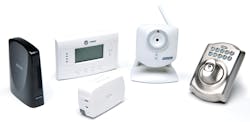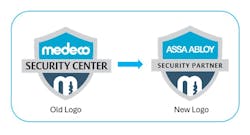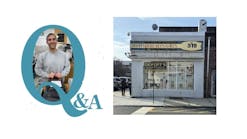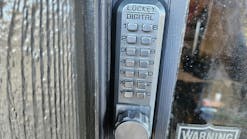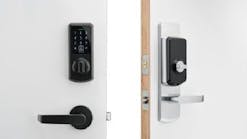It has been said that the “the only constant is change” and while the author of that quote may have lived more than 2500 years ago, it still holds true today. Change is good; it moves us forward and introduces new things and new ideas to us.
When I started in the industry, change seemed to come slowly. Products didn’t change much; we were very comfortable with what we sold and there wasn’t much pressure for new things. Things are different now. Today, end users want to see something new and especially something innovative at regular intervals. Just look at the computer industry. If your computer is more than three years old, it’s probably out of date and the latest software may not even run on it.
In the security industry, change can also be seen as a trend and we see it happening at a greater pace than ever before. So what are the trends in the security products we see right now?
Residential
To start, we will examine the trends in the residential sector.
When I started in the business in 1975, deadbolts were the hot item at the shop where I worked. Many homes and apartments had only a cylindrical lock on the door and that lock was often an old wafer-type that was easy to compromise. Adding a deadbolt was considered a major upgrade to security, as was adding a simple lock for the windows and sliding glass doors.
Sometime later, the alarm companies started selling security systems directly to homeowners. Early alarm systems may have added peace of mind but didn’t directly interface with any of the mechanical locks around the home. Alarms and door locks were separate devices and at their best only complimented each other.
Later on, pushbutton locks for residential use were developed and added the convenience of multiple codes for different users and the ability to quickly change codes if one was lost or abused. The ease of use of these locks, especially on doors that connected one part of the house from another like the laundry room or garage, makes them popular choices for security and convenience.
Building on that trend, Schlage has introduced the first lock for residential use that has an audible alarm sensor. The Schlage FE51 Alarm Lock is a grade 2, UL listed lock that has three alarm settings – Activity Alert, Tamper Alert and Forced Entry Alert. Even the sensitivity (level of touch/activity that sets off alarm) can be customized to the specific security needs of the homeowner. Programming is done right at the lock and no wiring is required. Two AAA batteries (included) provide power for up to three years and a low battery indicator lets you know when it’s time to change them. More information can be found at: http://consumer.schlage.com/Innovation/Pages/BuiltInAlarm.aspx
The Connected Home
Now there is a trend toward the connected home. This means that we are able to access our home, the lock on our front door, the lights, our thermostat and CCTV all via our computer, tablet or smart phone.
The ability to monitor what is going on in real time with the Schlage Nexia Home Intelligence systems gives you control of your property that was unheard of just a few years ago. Add to that the ability to actually control these devices from your computer, tablet or smartphone, and you have truly connected home environment.
The way this is accomplished is through Z-wave technology. Z-Wave devices communicate wirelessly with each other and with the Nexia Bridge. The Bridge plugs into your router to connect to your Broadband Internet. You then use the Nexia mobile app or your online Nexia subscription to control various Nexia (Z-Wave-based) devices in your home.
Z-Wave is a wireless technology that uses simple, reliable, low-power radio waves that easily travel through walls, floors and cabinets. Z-Wave control can be added to almost any electronic device in your house, even devices that you wouldn't ordinarily think of as "intelligent," such as locks, appliances, window shades, thermostats and home lighting. Right now, there are 232 devices compatible with Nexia Home Intelligence. This link below has the complete list: http://www.nexiahome.com/SupportCenter/Pages/compatibility.aspx?page=compatibility&main=1&mod=Compatibility
However, the mechanical lock is not dead; it still plays an important role in residential security. Key control is as important as ever and manufacturers offer restricted key systems and will continue to develop improved ways to prevent bumping, picking and other forms of forced entry. The use of commercial grade cylinders and restricted keyways in residential applications, especially multi-family properties, is growing and will always play a role in securing people and property.
Commercial
What about the trend for commercial applications? For some years, now it’s been clear that end users want a way to control who goes where and most importantly when they can do it. They also want to know who went where and when it happened, an audit trail. The need for this kind of security and accountability has never been more urgent and manufacturers have responded with a variety of both standalone and network connected access control products.
Schlage standalone access control locks like the AD200 and CO200 and the SMS Express software that manages them offer the end user a way to control the “who goes where and when” aspect of access control. The locks install quickly, the software is easy to use and, with a hand held PDA-type device, locks can be programmed and audits retrieved easily. These locks also have a mechanical key override which, when used, is recorded by the lock and then the software can retrieve an audit of the event. But since you can’t tell who was using the key, it should always be a high security, restricted keyway type. The locksmith who supplies and installs this hardware and software can offer their customer an effective security system at a reasonable price.
Networked Locks
If the end user needs more control, such as the ability to monitor the status of the opening, whether it’s open or closed, or if they want to instantly upload changes and retrieve audits then they need a network controlled system.
The Schlage AD200 can be re-classed to this type of functionality, another new trend in security. In the past, when an end user wanted a security upgrade from standalone to network controlled, that end user had to replace all their hardware with new. The cost of that often made the project to costly to move forward. With the ability to add new credential reader types and change a standalone AD200 to a wireless AD400 or hard wired AD300, that cost is dramatically reduced.
What these networked locks communicate to is also trending in a new direction. Up until recently, a networked system communicated with software that was installed on server and additional clients (other computers) could be added to the system which could all control the openings. This client/server type system is complicated and the IT department needed to be closely involved with the installation and maintenance of the system. The trend in networked systems now is towards what is known as a web enabled system. That means that the operating system resides on the controller itself and there is no need to install software on any computer. The Schlage bright blue access control system is an easy use 32 door controller that takes advantage of this new technology.
The adaptability of the AD lock has made the trend to more secure card technologies an easier one for the end user. While the mag stripe card and 125kHz prox card are still in wide use, the 13.56MHz smart card is rapidly growing and the cost for these cards is now nearly the same as the older style prox. Smart cards add a level of security by taking advantage of the read/write capability of the card making them much more difficult to compromise. Smart cards can also be used for other applications like time and attendance, point of sale purchases and vending, so their popularity is increasing.
When the AD lock was first introduced two years ago, there were three credential reader types for contactless credentials available –prox, smartcard and a multi-technology reader that would read both technologies’. The trend towards smart cards makes the multi-technology reader the best choice and the price of that technology has come down to the point where a multi-technology reader can be supplied for about the same cost as a single technology reader.
Biometrics is a trend in both residential and commercial applications. Some biometric locks for residential use have made their way to market and we can expect to see more. The use of biometric readers is growing, especially where the need to absolutely verify who is entering a facility is required. You can expect government facilities to require this kind of positive verification, which only biometrics can offer.
To be sure, there will be more changes and advancements in security and keeping up with the trends we see will make us ready for that future.
Chris Clark started in the industry in 1975 as a commercial Locksmith. He currently works for Ingersoll Rand Security Technologies in Southern California.
